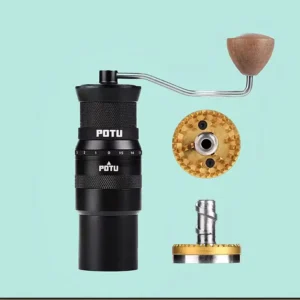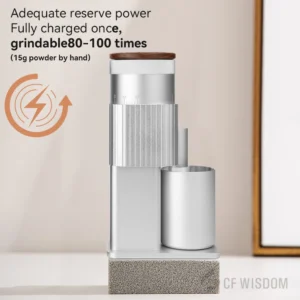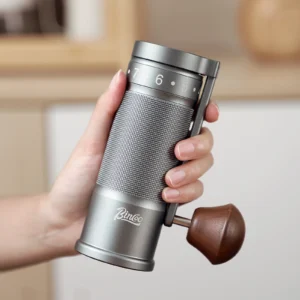Introduction to Manual Burr Grinder Maintenance
A clean manual burr grinder is the unsung hero behind every exceptional cup of coffee. While we often focus on bean origin, roast level, and brewing methods, the condition of your grinder plays an equally crucial role in the final flavor that ends up in your cup.
When coffee oils, fine dust, and tiny particles accumulate inside your grinder, they don’t just disappear. They linger, oxidize, and eventually taint fresh beans with stale, rancid flavors. This residue can dramatically alter taste, affecting up to 30% of your coffee’s flavor quality. Additionally, a well-maintained manual grinder typically lasts for many years, while neglected ones may need replacement after just a few months.
In this comprehensive guide, you’ll learn everything needed to keep your manual grinder in optimal condition: from daily quick-clean routines to thorough deep cleaning procedures. Whether you have a ceramic or metal burr grinder, these maintaining manual coffee grinders techniques will ensure your equipment delivers consistent, clean flavors cup after cup.
Think of grinder maintenance not as a chore but as an essential skill in your coffee journey—one that directly impacts every brew you’ll make.
Why Cleaning Your Manual Burr Grinder is Essential for Coffee Excellence
Flavor Preservation
Coffee beans contain natural oils that are essential for flavor, but these same oils become problematic when left to age in your grinder. When exposed to air, these oils undergo oxidation—the same process that makes cooking oils go rancid. This chemical change creates compounds that impart bitter, unpleasant flavors to your fresh coffee. A clean grinder eliminates this contamination source, allowing your beans’ true character to shine through.
Flavor Clarity
Ever notice how one distinctive coffee can seem to “haunt” subsequent brews? This cross-contamination becomes particularly noticeable with flavored coffees. Even small amounts of residue from a previous batch can muddy the taste profile of your current beans. Regular cleaning ensures each coffee variety can express its unique flavor notes without interference from lingering residues.
Grind Consistency
The hallmark of quality manual coffee burr grinders is their ability to produce consistent particle sizes. However, buildup around burr edges gradually affects their alignment and cutting precision. When particles vary widely in size, extraction becomes uneven—some grounds over-extract (creating bitterness) while others under-extract (creating sourness). Clean burrs maintain the precise cutting edges needed for uniform grounds.
Mechanical Performance
Coffee dust and hardened oils don’t just affect flavor; they impact functionality too. As residue accumulates, grinding requires more effort as the mechanism experiences increased resistance. This added friction causes premature wear on components and makes your morning routine unnecessarily laborious. Regular cleaning keeps everything turning smoothly.
Longevity
Quality manual grinders represent a significant investment. Comparing burr blade grinders reveals that burr models typically cost more but offer superior results—when properly maintained. The precision components in burr grinders can last for many years with regular cleaning, while neglect leads to damaged burrs, seized mechanisms, and ultimately, premature replacement.
Hygiene Factors
In humid environments, coffee residue can create conditions favorable for mold growth. While this is less common with manual grinders (which typically have less moisture exposure than electric models), it remains a concern for long-term storage. Regular cleaning eliminates this potential health issue entirely.
Clean grinders don’t just produce better-tasting coffee—they create the conditions necessary for mastering espresso grind texture extraction and achieving consistently excellent results in every brewing method you use.
How Often Should You Clean Your Manual Coffee Grinder?
Establishing a regular cleaning schedule prevents buildup while minimizing maintenance time. The ideal cleaning frequency depends on your specific usage patterns, but these guidelines work for most coffee enthusiasts:
Daily Quick Maintenance (10-15 seconds)
After each use, a brief cleanup prevents accumulation from starting. This simple habit removes the majority of loose grounds and requires minimal effort—just a few seconds of your time.
Weekly Light Cleaning (2-3 minutes)
This more thorough brushing addresses accessible parts before residue can harden. Weekly maintenance focuses on areas that collect the most residue without requiring full disassembly.
Monthly Deep Cleaning (15-20 minutes)
A complete disassembly and detailed cleaning ensures all components return to like-new condition. This thorough process removes oils and fine particles from every surface, restoring optimal performance.
Factors Affecting Cleaning Frequency
Several variables might require you to adjust your cleaning schedule:
- Coffee Volume: The more coffee you grind, the more frequently cleaning is needed
- Roast Level: Darker roasts contain more surface oils that leave residue behind
- Bean Varieties: Switching between different origins or roasts benefits from more frequent cleaning
- Environmental Conditions: Higher humidity accelerates oil degradation and increases cleaning needs
Recommended Cleaning Schedule Reference
| Usage Level | Deep Cleaning Frequency | Special Considerations |
|---|---|---|
| Light (1-3 cups daily) | Every 2-3 months | Brush after each use |
| Moderate (4-6 cups daily) | Monthly | Weekly brushing essential |
| Heavy (7+ cups daily) | Every 2-3 weeks | Consider daily quick cleaning |
| After grinding flavored coffee | Immediate deep clean | Prevents flavor contamination |
Understanding the ultimate espresso grind size chart helps emphasize why cleaning matters—inconsistent grind size dramatically affects extraction quality, and a clean grinder is essential for maintaining precise size distribution.
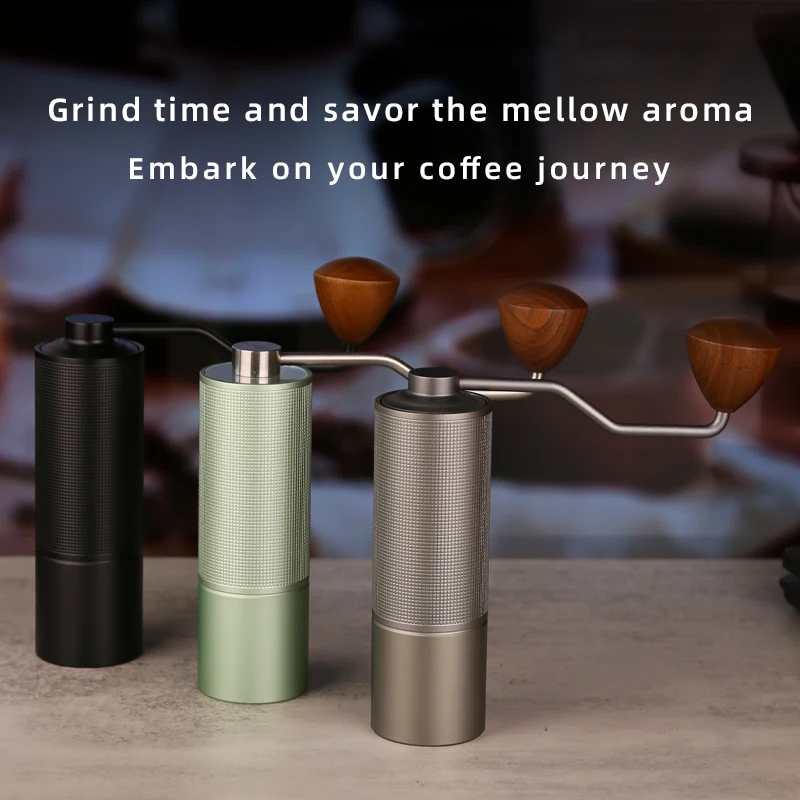
Essential Tools and Materials for Effective Grinder Cleaning
Having the right tools makes grinder maintenance faster, more effective, and prevents accidental damage. Here’s everything you’ll need for proper cleaning:
Must-Have Cleaning Tools
Soft Brushes: A small brush with natural bristles works best for burr cleaning. Photography lens brushes are excellent as they’re designed to clean delicate equipment without scratching. A slightly larger brush helps with broader surfaces.
Microfiber Cloths: These lint-free cloths clean external surfaces without leaving fibers behind. They’re gentle enough for all grinder materials but effective at removing oils and residue.
Small Container: A shallow dish or bowl keeps tiny parts organized during disassembly. This simple tool prevents lost screws or springs.
Cotton Swabs: Perfect for reaching tight corners and crevices where brushes can’t reach. They’re particularly useful for cleaning threading and adjustment mechanisms.
Optional but Helpful Tools
Blower Brush or Canned Air: Effectively removes loose grounds from hard-to-reach areas without physical contact. This prevents grounds from being pushed deeper into mechanisms.
Wooden Toothpicks: Ideal for removing stubborn, compacted coffee residue without scratching metal or ceramic surfaces.
Small Cleaning Mat: A soft mat with divided sections keeps parts organized and prevents components from rolling away during cleaning.
Safe Cleaning Agents
Food-Safe Grinder Cleaning Tablets: Specially formulated tablets absorb oils without leaving harmful residues. These are particularly useful for very oily buildups.
Mild, Fragrance-Free Dish Soap: Use only on non-burr parts that can be rinsed thoroughly, like plastic hoppers or glass catch jars.
What to Absolutely Avoid
Water on Metal Burrs: Water causes rusting on steel burrs and can damage precision cutting edges.
Harsh Chemicals and Solvents: These can degrade materials, affect flavor, and pose health risks.
Abrasive Materials: Steel wool, rough brushes, or abrasive cleaners will damage precision grinding surfaces.
Uncooked Rice as Cleaning Medium: Though once commonly recommended, modern grinder manufacturers warn against this practice. Rice is harder than many people realize and can damage burrs or stress the grinding mechanism.
High-quality precision manual grinders often feature designs that simplify the cleaning process. When purchasing a new grinder, consider how easily it can be disassembled and maintained as this significantly affects long-term satisfaction.
Quick Daily Maintenance: The 30-Second Routine for Freshness
Establishing a quick post-grinding routine prevents 70% of buildup issues before they start. This simple process takes less than 30 seconds but dramatically reduces the frequency and intensity of deep cleanings needed:
The 5-Step Daily Maintenance Routine
Empty Remaining Grounds Completely: Tap the grinder gently to release all grounds into your brewing device or disposal container. Don’t leave grounds sitting in your grinder between uses.
Gentle Tap to Dislodge Trapped Grounds: Hold your grinder upside down and tap the sides with your palm using light to medium force. This dislodges grounds hiding in crevices without damaging components.
Quick Brush of Visible Burr Surfaces: With the grinder still upside down, use your soft brush in a circular motion around visible burr surfaces. Focus on the exit chute where grounds often accumulate.
Wipe Down Exterior: Use a dry microfiber cloth to remove fingerprints and coffee dust from external surfaces. This prevents oils from your hands from degrading finish materials.
Store Properly: Leave the lid off or loosely attached in a dry location. This allows any remaining moisture to evaporate rather than becoming trapped inside.
The key to success with daily maintenance is consistency rather than thoroughness. A quick, imperfect cleaning every day is far more effective than an occasional perfect cleaning. This habit integrates seamlessly with the 30-second espresso rule complete guide, creating an efficient coffee workflow.
For maximum effectiveness, use deliberate brush strokes rather than random movements—work from the center outward in a spiral pattern to ensure you cover all surfaces. This methodical approach takes no extra time but significantly improves results.
Remember that daily maintenance complements rather than replaces periodic deep cleaning. Think of it as brushing your teeth daily while still needing occasional dental cleanings—both are essential for optimal care.
The Step-by-Step Deep Cleaning Process: Preparation and Disassembly
A thorough deep cleaning starts with proper preparation and careful disassembly. Taking time with this process prevents damaged parts and ensures nothing gets lost along the way.
Preparation Phase
Set Up Your Workspace: Choose a clean, well-lit surface with plenty of space. A light-colored towel or mat makes small parts more visible and prevents them from rolling away.
Gather All Tools and Materials: Have all cleaning tools within reach before starting. This prevents interruptions or handling components with dirty hands.
Take Reference Photos: If this is your first time disassembling your particular grinder model, take photos at each step with your smartphone. These visual references make reassembly much easier.
Review Safety Considerations: Work over a surface that won’t damage parts if dropped. Keep small components away from edges, pets, and children.
Systematic Disassembly Process
Remove Hopper Lid and Any Beans: Empty the grinder completely and set aside any remaining beans in an airtight container.
Detach Handle and External Components: Remove the grinding handle (typically counterclockwise) and any external accessories. Some models have magnetic handles that simply pull off.
Access and Remove Outer Burr Assembly: Most manual grinders allow outer burr removal by unscrewing the adjustment ring or removing retaining clips. Follow manufacturer-specific directions for your model.
Carefully Extract Inner Burr: Pay close attention to the orientation and position before removal. Some burrs have asymmetrical mounting that must be aligned correctly during reassembly.
Remove Springs, Washers, or Adjustment Mechanisms: Keep these small parts in your designated container in the order they were removed.
Organize Parts Methodically: Arrange components in a logical sequence that will help with reassembly. Some people find it helpful to arrange parts from left to right in the order they were removed.
Critical Warnings
Check Your Manual: While most hand burr grinders follow similar designs, specific disassembly procedures vary. When in doubt, consult your manufacturer’s guide.
Handle With Extra Care: Burrs have precisely machined cutting edges that can be damaged by dropping or improper handling. The adjustment mechanism typically contains the most delicate components.
Avoid Common Disassembly Mistakes: Never force components apart. If something won’t separate easily, look for hidden fasteners or specific release mechanisms. Forcing parts can break internal components that are difficult to replace.
For most grinders, the full disassembly process takes 3-5 minutes once you’ve become familiar with your specific model. Take your time during first attempts—rushing typically leads to frustration and potential damage.
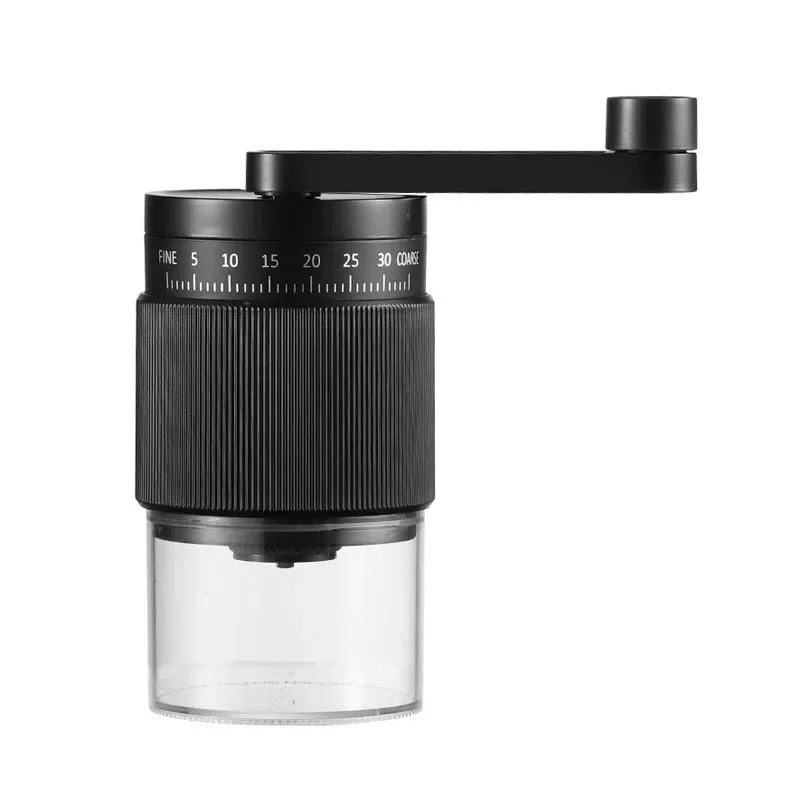
Cleaning Each Component: Techniques for Different Grinder Parts
Each component of your grinder requires specific cleaning approaches to remove residue effectively without causing damage. Here’s how to clean each part properly:
Metal/Ceramic Burrs (Heart of the Grinder)
Dry Brushing Technique: Hold burrs over your cleaning surface and use short, firm strokes with your soft brush. Work from the center outward, following the pattern of the cutting teeth. For flat burrs, use circular motions; for conical burrs, use downward strokes that follow the cutting channels.
Accessing Hard-to-Reach Areas: Use a cotton swab or toothpick to gently remove compacted grounds from between cutting edges. Be particularly thorough with the corners where teeth meet the base plate.
Removing Coffee Oils: For metal burrs with significant oil buildup, wipe with a clean, dry microfiber cloth. Never use liquids directly on burrs.
Ceramic vs. Metal Considerations: Ceramic burr coffee grinders require extra caution as ceramic is more brittle than metal. Use lighter pressure when cleaning ceramic burrs to prevent chipping. Understanding the ceramic vs steel burr coffee grinders differences helps with proper maintenance approaches.
Grinding Chamber and Chute
Interior Surface Cleaning: Use your small brush in a circular motion to loosen and remove grounds from interior surfaces. Pay special attention to corners where grounds often compact.
Thread Cleaning: For adjustable grinders, use a dry cotton swab to clean threading. Rotate the swab along the threads rather than against them to avoid pushing debris deeper.
Removing Static-Cling Grounds: For stubborn grounds clinging due to static electricity, lightly tap the chamber while brushing. Some grinders benefit from a brief rest period (10-15 minutes) after use to allow static to dissipate before cleaning.
Grounds Catcher and External Parts
Removable Container Cleaning: Glass and plastic catchers can be washed with warm water and mild soap. Ensure they are completely dry before reattaching.
Wooden Components: For grinders with wooden elements, wipe with a barely damp cloth and dry immediately. Never soak wooden parts.
Viewing Windows: Clean clear viewing windows with a soft cloth slightly dampened with water, then dry thoroughly to prevent water spots.
Handles and Moving Components
Connection Points: Clean the handle socket and connection point with a dry brush to remove coffee dust that can affect smooth operation.
Bearing Surfaces: Wipe any visible bearings or rotation points with a clean, dry cloth. Avoid removing existing lubrication from bearing surfaces.
A component is truly clean when it reveals its original color and texture, and no coffee dust appears when wiping with a clean cloth. Pay special attention to areas where different materials meet—these junctions often trap the most residue.
Drying and Reassembly: Ensuring Perfect Function After Cleaning
Proper drying and methodical reassembly are critical steps that many coffee enthusiasts rush through. Taking your time here prevents moisture-related problems and ensures your grinder works correctly afterward.
Thorough Drying Process
Air-Drying Technique: Lay all components on a clean, dry towel in a well-ventilated area. Allow gravity to help drain any moisture that might be present in crevices.
Drying Duration Guidelines:
- Metal components: minimum 30 minutes
- Plastic components: minimum 15 minutes
Wooden components: up to 24 hours if they contacted any moisture
Verifying Dryness: Components should feel room temperature to the touch (cold spots indicate remaining moisture). Check threading and crevices carefully—these areas retain moisture longest.
Why Rushing Ruins Everything: Even slight moisture trapped in a reassembled grinder can cause:
- Rust development on metal burrs
- Ground coffee sticking and clumping
- Potential mold growth in hidden areas
Strategic Reassembly
Correct Assembly Order: Generally, work in reverse order of disassembly. Start with the core grinding mechanism and work outward.
Burr Alignment: Ensure burrs seat fully and evenly. Most have notches or tabs that align only in the correct position. Improper alignment causes inconsistent grinding and potential damage.
Setting Initial Calibration: Reassemble with the grinder at its coarsest setting initially. This provides clearance that helps components seat properly without binding.
Movement Testing: After each major component is reattached, rotate or move it gently to ensure it functions smoothly before adding the next piece.
Functional Testing
Hand Testing: Before adding beans, turn the handle to feel for any unusual resistance or grinding. The mechanism should turn smoothly without catching or scraping.
Test Grinding: Use a small amount (5-10 beans) for an initial test. Listen for any unusual sounds and examine the resulting grounds for consistency.
Adjustment Refinement: After initial testing, fine-tune your correct grind setting espresso or other brewing methods to match your pre-cleaning results.
The entire drying and reassembly process typically takes 30-45 minutes, including drying time. This investment ensures your freshly cleaned grinder performs optimally and produces the best possible flavor in your next coffee brewing session.
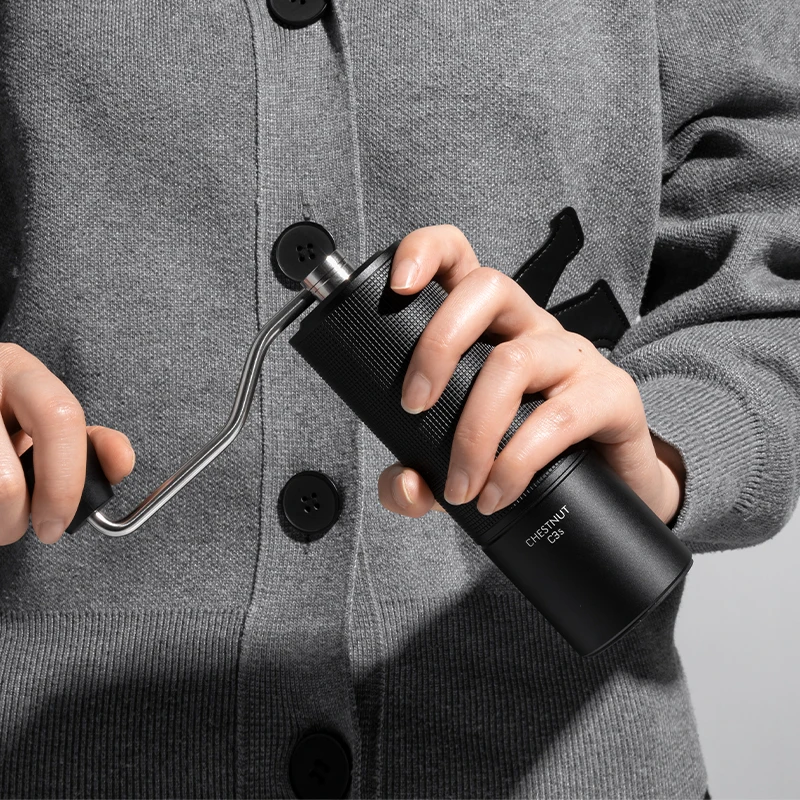
Testing and Calibration After Cleaning: Ensuring Optimal Performance
After reassembly, proper testing and calibration ensure your clean grinder delivers consistent, high-quality results. Follow these steps to verify everything is working correctly:
Initial Function Testing
Resistance Check: Rotate the handle through several complete turns without beans. The movement should feel smooth and consistent throughout the rotation. Any catching, grinding, or uneven resistance indicates reassembly issues.
Calibration Verification: Check that your adjustment mechanism moves freely through its entire range, from finest to coarsest settings. Note any points where movement feels restricted.
Component Stability: Ensure all parts remain securely in place during handle rotation. Loose components during this test will only become more problematic when grinding actual coffee.
First Grind Test
Using “Sacrificial” Beans: Your first grind after cleaning should use inexpensive beans rather than your premium coffee. This initial grind removes any remaining cleaning residue or loose particles.
Evaluating Grind Consistency: Examine the grounds produced in this first test carefully. They should appear uniform in size without unusual clumping or powder. Inconsistent particle size indicates potential burr misalignment.
Addressing Adjustment Issues: If resistance increases dramatically at finer settings, back off slightly and try again. Forced grinding at too fine a setting after cleaning can damage newly aligned components.
Grind Setting Reset
Finding Your Zero Point: Many enthusiasts establish their grinder’s “zero point” (where burrs just touch) after cleaning, then count clicks or rotations from this reference point to establish their preferred settings.
Re-establishing Preferences: Work systematically through your typical brewing methods, noting the appropriate settings for each. Mastering perfect espresso adjust grind becomes easier with this methodical approach.
Comparing Before/After Results: Notice improvements in grind consistency and flavor clarity in your brewed coffee. Clean burrs typically produce more uniform particle size and less dust.
Understanding espresso grind settings perfect shot helps you recognize when your cleaned grinder is performing optimally. Most users notice immediately that grinding requires less effort and produces more consistent results after proper cleaning.
Fine Adjustment Hand Grinder, Precision Manual Grinder, Travel Coffee Grinder
Price range: $185.11 through $494.63 Select options This product has multiple variants. The options may be chosen on the product pageHand Burr Grinder, Hand Crank Coffee Grinder, Manual Espresso Grinder, Portable Coffee Grinder
Price range: $262.72 through $300.22 Select options This product has multiple variants. The options may be chosen on the product pageManual Burr Mill, Manual Coffee Grinder Stainless Steel, Manual Coffee Mill Grinder, Mechanical Coffee Grinder
Price range: $127.26 through $130.32 Select options This product has multiple variants. The options may be chosen on the product pageHand Burr Grinder, Manual Coffee Grinder Stainless Steel, Precision Manual Grinder
Price range: $183.64 through $187.52 Select options This product has multiple variants. The options may be chosen on the product page
A properly recalibrated grinder provides the foundation for consistent brewing results across all your favorite coffee preparation methods.
Special Cleaning Scenarios: Addressing Stubborn Issues and Specific Grinders
Some situations require specialized approaches beyond standard cleaning procedures. Here’s how to handle these challenging scenarios:
Dealing with Severely Neglected Grinders
Extended Soaking for Non-Burr Components: Removable plastic, glass, or metal containers (not burrs) can benefit from soaking in warm water with mild dish soap for 30 minutes. This loosens hardened residue before scrubbing.
Multiple Cleaning Cycles: For extremely dirty grinders, plan on performing 2-3 cleaning cycles over several days. Each cycle will remove a layer of buildup until original surfaces are restored.
When to Use Specialized Tablets: Coffee grinder cleaning tablets can help with severe oil buildup. Follow package directions precisely and ensure all residue is removed before reassembly.
Removing Oils from Dark-Roast Buildup
Enhanced Oil Removal Techniques: For persistent oil residue, gently wiping metal parts with a microfiber cloth very lightly dampened with food-grade alcohol can help. Ensure complete drying afterward.
Prevention Strategies: When regularly grinding dark roasts, increase cleaning frequency by 30-50%. The extra oils in dark roasts accelerate buildup formation.
Model-Specific Considerations
Travel Grinders: Travel coffee grinders often have more compact designs with tighter tolerances. These require extra attention to cleaning small spaces and complete drying before reassembly.
Premium Grinders: High-end models with specialized mechanisms may have specific cleaning recommendations from manufacturers. These often include avoiding certain cleaning agents that might affect special coatings or materials.
Budget Grinders with Plastic Components: Take extra care with plastic adjustment mechanisms as they can be more susceptible to wear during cleaning. Use lighter pressure and avoid any cleaning agents that might degrade plastic.
Seasonal Deep Cleaning
Storage Preparation: Before storing a grinder for extended periods, perform a complete deep clean and ensure all parts are thoroughly dry. Leave assembled but with the adjustment set to a middle range to prevent spring tension issues.
Climate Considerations: In humid environments, consider adding a food-safe desiccant packet near (but not inside) your stored grinder to prevent moisture accumulation.
Recognizing when these special scenarios apply helps you adapt your cleaning approach appropriately. The goal remains the same: restoring your grinder to optimal performance while preserving its functional integrity.
Creating a Sustainable Maintenance Schedule for Your Grinder
Establishing consistent cleaning habits ensures your grinder remains in peak condition without becoming a burdensome chore. Here’s how to create a practical maintenance routine:
Building Consistent Cleaning Habits
Connect grinder maintenance to existing coffee rituals. For example, make quick cleaning part of your morning coffee routine, and deep cleaning part of your bean restocking process. This association helps turn maintenance into an automatic habit rather than a forgotten task.
Sample Maintenance Schedules
| User Profile | Daily Routine | Weekly Routine | Monthly/Deep Clean |
|---|---|---|---|
| Daily Coffee Drinker | Quick brush after each use | 5-minute component brushing | Full disassembly every 4-6 weeks |
| Weekend Enthusiast | N/A | 5-minute cleaning after weekend use | Full disassembly every 3 months |
| Multiple Coffee Types | Quick brush between bean types | 5-minute brushing twice weekly | Full disassembly monthly |
Personalization Factors
Adjust your schedule based on:
* Usage Patterns: More frequent use requires more frequent cleaning
* Coffee Types: Oilier beans need more frequent maintenance
* Environmental Conditions: Higher humidity accelerates residue hardening
* Grinder Construction: Some models naturally trap more grounds than others
Tracking Methods
- Use calendar reminders for deep cleaning sessions
- Add notes in your coffee journal about grinder performance
- Watch for visual indicators that signal cleaning needs (slower grinding, visible residue, less consistent grounds)
Understanding the different needs of manual automatic espresso grinder settings helps you recognize when maintenance is necessary. Generally, manual grinders require less frequent deep cleaning than automatic ones, but benefit more from regular quick maintenance.
The key to sustainable maintenance is finding a balance that keeps your grinder performing well without becoming overly time-consuming. A well-maintained grinder plays a crucial role in mastering espresso grind size and brewing consistency.

Troubleshooting Common Post-Cleaning Issues
Even with careful cleaning and reassembly, occasional issues may arise. Here’s how to diagnose and resolve common problems:
Grind Inconsistency After Cleaning
Problem: Coffee grounds show visible inconsistency with mixture of fine and coarse particles.
Potential Causes:
* Burrs not seated properly
* Component misalignment
* Reassembly in incorrect order
Solutions:
* Disassemble and check burr alignment marks
* Ensure all components sit flush against mating surfaces
* Verify all parts were reinstalled in correct sequence
* Check for small grounds trapped between burr surfaces
Increased Grinding Resistance
Problem: Handle turns with significantly more effort than before cleaning.
Potential Causes:
* Overtightened components
* Misaligned burrs creating friction
* Incomplete drying leading to grounds sticking
* Missing lubrication on bearing points
Solutions:
* Back off adjustment setting to coarsest position
* Verify central axle alignment
* Check for residual moisture and allow additional drying time
* For grinders that specify bearing lubrication, confirm proper application
Strange Noises During Grinding
Problem: Clicking, scraping, or grinding sounds not present before cleaning.
Potential Causes:
* Metal-on-metal contact from misalignment
* Loose component vibration
* Foreign object trapped in mechanism
Solutions:
* Stop grinding immediately to prevent damage
* Disassemble and inspect all components for improper seating
* Check for small parts (springs, washers) that may have been incorrectly positioned
* Ensure burr carrier is fully seated
Residual Taste Issues
Problem: Coffee tastes off or carries cleaning product flavors.
Potential Causes:
* Cleaning agent residue
* Incomplete removal of old coffee oils
* Insufficient “seasoning” after cleaning
Solutions:
* “Purge” grinder with 20-30g of inexpensive coffee
* For persistent issues, disassemble and rinse non-burr components again
* Allow components to fully air dry for extended period
* Season burrs by grinding small amounts of beans until taste normalizes
Understanding beyond numbers perfect espresso grind helps you recognize when your grinder is performing correctly versus when it needs adjustment after cleaning. The most common issue is simply burr misalignment, which can usually be fixed with careful reseating of the burr assembly.
Advanced Tips for Grinder Longevity and Peak Performance
Implement these expert-level practices to extend your grinder’s lifespan and maintain optimal performance between cleanings:
Preventative Care Beyond Cleaning
Bean Selection Impact: Choose beans with moderate oil content when possible. Extremely oily dark roasts accelerate buildup, while very dry light roasts can create more fine dust.
Optimal Storage Conditions: Store your grinder in a low-humidity environment when not in use. Consistent temperature conditions prevent expansion and contraction cycles that can affect calibration.
Pre-Grinding Practices: Examine beans for foreign objects (small stones, twigs) before grinding. These can damage precision burrs instantly.
Enhancing Grind Quality Through Maintenance
- Recognizing Burr Replacement Need: Even with perfect maintenance, burrs eventually wear. Signs include:
- Inability to achieve fine enough grinds
- Significantly increased grinding time
- Visible wear on cutting edges
Persistently inconsistent particle size
Minor Adjustments for Improvement: Periodically check the concentricity of your burrs (how perfectly centered they are). Minor adjustments to mounting can improve consistency dramatically.
Advanced Calibration: Some premium grinders allow calibrating the “zero point” where burrs touch. Learning this adjustment for your specific model enhances precision.
Extending Time Between Deep Cleanings
Strategic Quick-Cleaning: Focus daily cleaning on the exit chute and grounds chamber—these areas see the most residue accumulation.
Bean Rotation Practices: When switching between very different coffee types, run a few beans of the new type through and discard them to “purge” flavors from the previous coffee.
Humidity Control: In high-humidity environments, leaving your grinder partially disassembled (top off) when not in use allows moisture to escape rather than condense inside.
Understanding perfect grind setting espresso helps you recognize how small maintenance improvements directly impact extraction quality. With proper maintenance, quality burrs typically last 500-1000 pounds of coffee before requiring replacement—representing years of daily use for most home brewers.
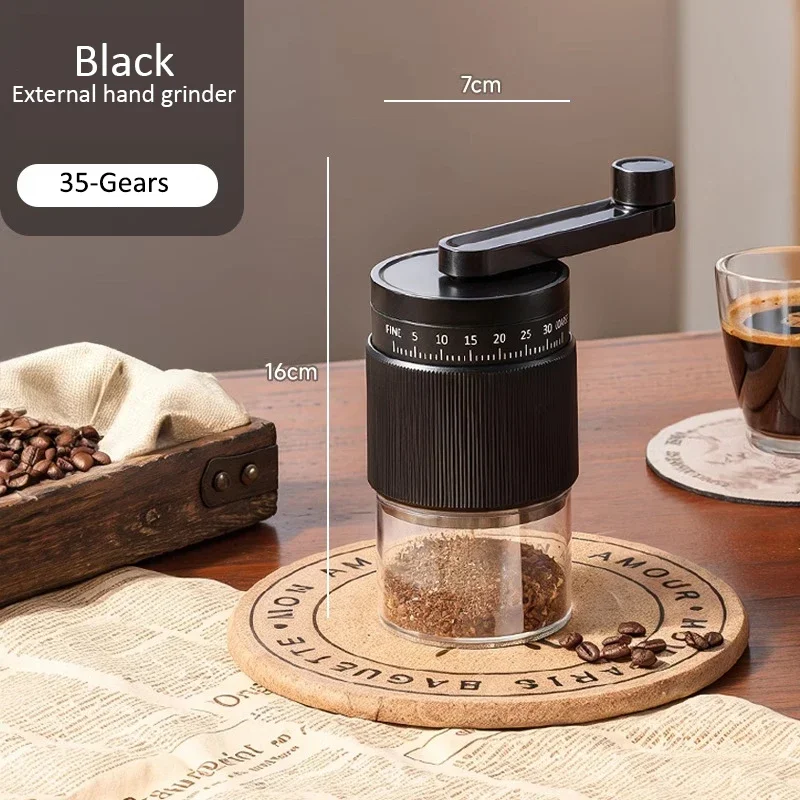
Frequently Asked Questions About Manual Burr Grinder Cleaning
Common Misconceptions and Controversies
“Can I use water to clean my burrs?”
While metal burrs themselves should generally not be exposed to water, there are limited exceptions. Some manufacturers of stainless steel burrs allow quick rinsing with immediate and thorough drying. However, most quality burrs—even stainless steel manual coffee grinders—perform best with dry cleaning methods to prevent oxidation and potential damage to precision edges.
“Is it safe to use rice for cleaning?”
Despite being a formerly popular recommendation, grinding uncooked rice through your grinder is now discouraged by most manufacturers. Rice can be harder than many coffee beans and may damage or dull burrs. Additionally, rice creates starchy dust that can create its own residue problems. Specialized grinder cleaning pellets made specifically for coffee grinders are a better alternative if you need an abrasive cleaning method.
“Do I really need to disassemble completely?”
Full disassembly isn’t always necessary. For weekly maintenance, removing just the external components and outer burr is often sufficient. However, monthly deep cleaning benefits from complete disassembly to reach all surfaces and prevent buildup in hidden areas. The effort invested in occasional full disassembly prevents performance issues and extends burr life significantly.
Special Situations
“How do I clean after grinding flavored coffee?”
Flavored coffees contain added oils that are particularly persistent. After grinding flavored beans, perform an immediate deep cleaning. If full disassembly isn’t possible, run a small amount (15-20g) of plain, inexpensive beans through the grinder to absorb flavored oils, then discard these grounds. Follow with thorough brushing of accessible components. Still, eventual deep cleaning is recommended.
“Can I use alcohol for cleaning metal burrs?”
Food-grade alcohol (like high-proof unflavored vodka or pure grain alcohol) can be used sparingly on a cloth to wipe metal burrs for stubborn oil removal. Never soak burrs in alcohol, and ensure complete evaporation before reassembly. This method should be used sparingly, not as regular practice.
“How do I address rust spots on burrs?”
Prevention is key—keep burrs dry at all times. For minor surface rust, dry brushing with a soft brass brush (never steel) can help. Significant rust indicates water exposure and may require burr replacement, as rusted edges won’t grind effectively.
Maintenance Timing
“My grinder is brand new – do I need to clean it before first use?”
Yes, even new grinders benefit from initial cleaning. Manufacturing can leave metal dust, packaging residue, or machine oil traces. A quick disassembly and dry brushing removes these contaminants before they contact your coffee.
“I haven’t used my grinder in months – what should I do?”
Before using a long-stored grinder, complete a full deep clean. Extended storage allows any residual oils to oxidize and potentially become rancid. Check all moving parts for smooth operation, and examine burrs for any signs of corrosion or damage before returning to regular use.
Conclusion: Enjoying the Benefits of Your Perfectly Maintained Grinder
A clean, well-maintained manual burr grinder delivers benefits that transform your coffee experience from ordinary to exceptional. With regular maintenance, you’ll enjoy more vibrant flavors, consistent extraction, and smoother mechanical operation—all contributing to superior coffee quality in every cup.
The investment of time in grinder care pays remarkable dividends. A properly maintained grinder can provide years or even decades of reliable service, while enhancing the flavor clarity of even modestly priced beans. The subtle notes and complex characteristics of specialty coffee shine through when ground with clean, properly aligned burrs.
Consider incorporating grinder maintenance into your coffee ritual—a moment of care for the tool that bridges the gap between whole beans and brewing excellence. This mindfulness connects you more deeply to the coffee preparation process and demonstrates your commitment to quality at every step.
By implementing the cleaning procedures and maintenance schedules outlined in this guide, you’ve taken an important step toward coffee perfection. Your palate will thank you with every delicious cup.


